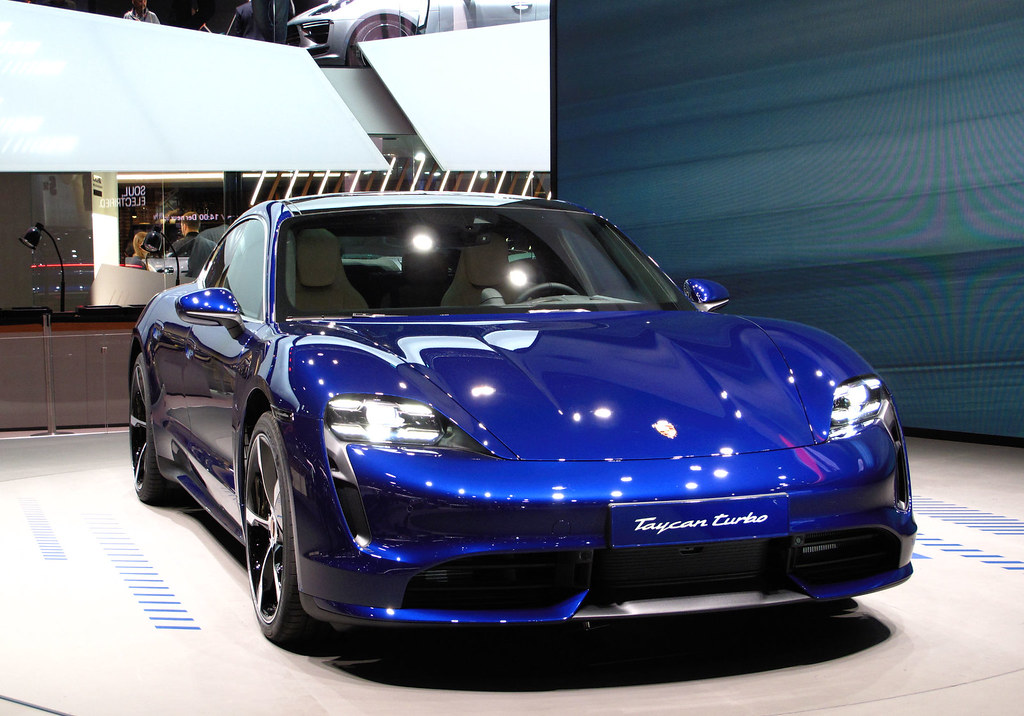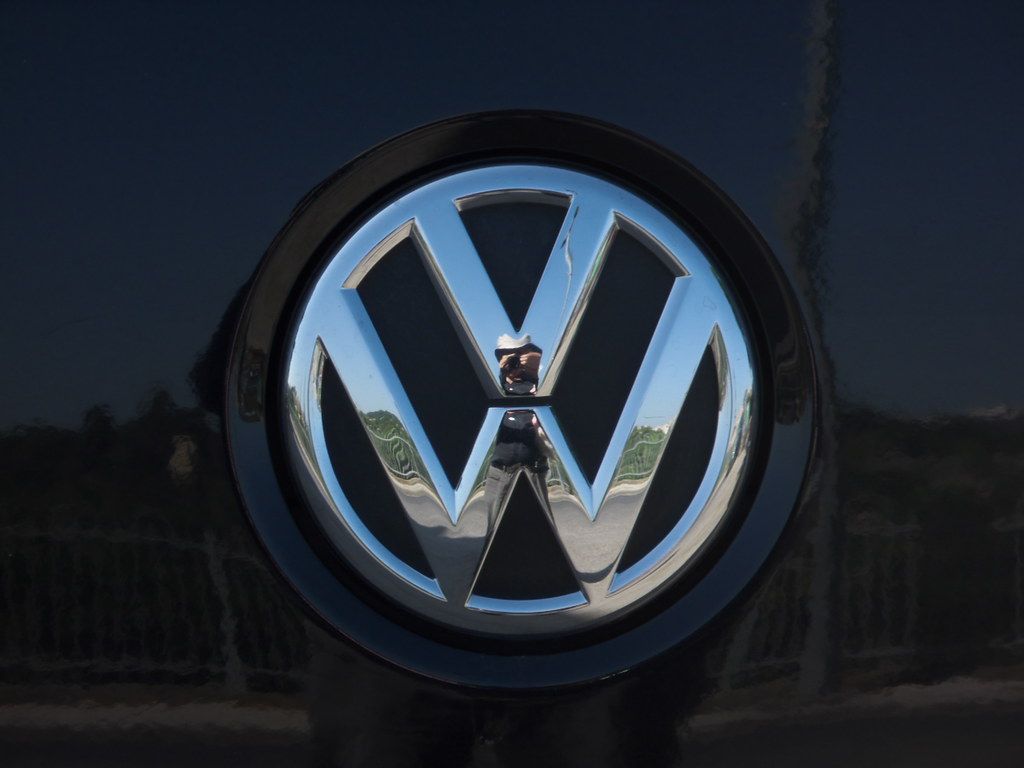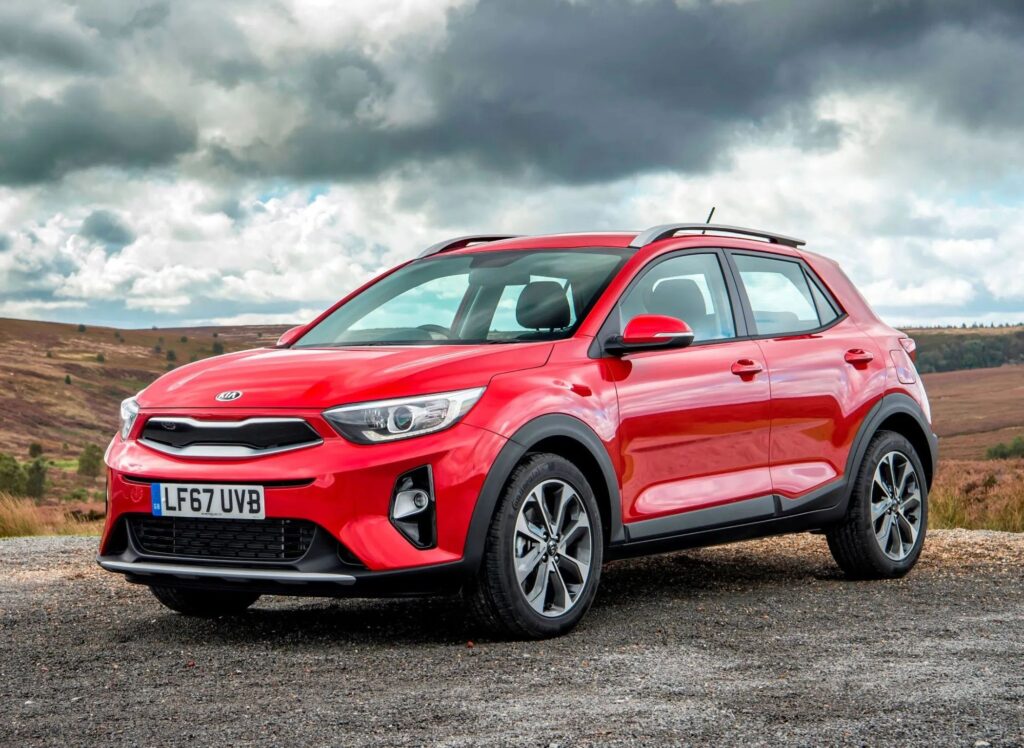
The call of the wild has never been stronger, with more people seeking escape in the great outdoors through camping and overlanding adventures. These journeys, often into remote wilderness areas, demand a vehicle that doesn’t just transport you, but truly enables discovery and exploration. Choosing the right vehicle is paramount, as it can transform challenging terrain into accessible pathways to memorable experiences.
An ideal adventure vehicle strikes a delicate balance between rugged capability and essential comfort, offering the durability required for extensive off-road exploration while providing practical features for extended stays in nature. Today’s market boasts an impressive array of options, ranging from purpose-built off-road warriors with deep heritage to surprisingly capable crossovers that inject versatility into the outdoor lifestyle. These diverse vehicles unite key characteristics such as robust ground clearance, advanced all-wheel-drive systems, ample storage capacity, and unwavering durability, effectively serving as mobile base camps for any outdoor enthusiast.
Whether your plans involve tranquil weekend getaways to established campgrounds or ambitious, multi-day expeditions across challenging backcountry routes, the right vehicle acts as both your reliable transportation and your indispensable shelter. This comprehensive guide will meticulously examine 13 of the best vehicles currently available for camping and overlanding. We’ll meticulously consider critical factors including their inherent off-road capability, generous cargo space, renowned reliability, the breadth of aftermarket support, and the comfort features specifically designed to elevate your outdoor experience. From iconic 4x4s that have defined generations of adventure to innovative modern SUVs and trucks, these selections represent the finest choices for those truly ready to venture beyond the pavement.

1. **Toyota 4Runner**The Toyota 4Runner stands as a legendary figure within the vibrant overlanding community, having solidified its formidable reputation over decades of proven reliability and exceptional off-road performance. This steadfast body-on-frame SUV distinguishes itself as one of the few mid-size options still constructed upon a traditional truck platform, a design choice that inherently provides the robust durability essential for serious backcountry exploration and demanding trails.
Under the hood, the current generation is equipped with a 4.0-liter V6 engine, which delivers a respectable 270 horsepower and 278 lb-ft of torque. While these figures might appear modest by contemporary automotive standards, this engine configuration specifically offers the crucial low-end grunt that is absolutely essential for navigating technical off-road driving scenarios with confidence and control. The 4Runner’s balanced approach to capability and practicality is what truly sets it apart from many of its competitors, making it a favorite among enthusiasts.
For those seeking heightened off-road prowess, the TRD Pro and TRD Off-Road trims are particularly noteworthy, coming equipped with a suite of sophisticated off-road technologies. These include the highly effective Multi-Terrain Select system, Crawl Control for navigating tricky obstacles at low speeds, and an electronically locking rear differential for maximizing traction in challenging conditions. These advanced features are designed to empower even novice drivers to confidently traverse challenging terrain, while the 4Runner’s impressive 9.6 inches of ground clearance and robust skid plates further enhance its ability to navigate rocky trails without sustaining damage.
Practicality extends to the interior, where the 4Runner offers a substantial 89.7 cubic feet of cargo space when the rear seats are folded flat, providing ample room for all your essential camping gear and expedition supplies. An available sliding rear cargo deck is a clever addition, capable of supporting up to 440 pounds, thereby creating a convenient and stable platform ideal for camp cooking, gear organization, or simply relaxing at your chosen destination. Furthermore, the aftermarket support for the 4Runner is extraordinarily robust, offering a vast array of options from customized roof racks and intricate storage systems to advanced suspension upgrades and comprehensive protective armor, allowing for extensive personalization.
It is worth noting that while the 4Runner’s fuel economy, rated at 16 mpg city and 19 mpg highway, falls short of more modern vehicle designs, its generous 23-gallon fuel tank provides an adequate range for venturing into remote adventures. This, combined with the vehicle’s legendary reliability – a cornerstone of the Toyota brand – ensures that owners can confidently explore far from civilization. For those specifically seeking a purpose-built overlanding platform with thoroughly proven credentials, the Toyota 4Runner unquestionably remains the benchmark against which other adventure vehicles are measured.
Car Model Information: 2014 Toyota 4Runner Limited
Name: Toyota 4Runner
Caption: 2025 Toyota 4Runner TRD Sport (N500)
Manufacturer: Toyota
Aka: Toyota Hilux Surf (Japan, 1983–2009)
Production: October 1983 – present
ModelYears: 1984–present (US)
Class: unbulleted list
Layout: unbulleted list
Chassis: Body-on-frame
Successor: unbulleted list
Categories: 1990s cars, 2000s cars, 2010s cars, 2020s cars, All-wheel-drive vehicles
Summary: The Toyota 4Runner is an SUV manufactured by the Japanese automaker Toyota and marketed globally since 1984, across six generations. In Japan, it was marketed as the Toyota Hilux Surf and was withdrawn from the market in 2009. The original 4Runner was a compact SUV and little more than a Toyota Hilux pickup truck with a fiberglass shell over the bed, but the model has since undergone significant independent development into a cross between a compact and a mid-size SUV. All 4Runners have been built in Japan at Toyota’s plant in Tahara, Aichi, or at the Hino Motors (a Toyota subsidiary) plant in Hamura. The name “4Runner” was created by copywriter Robert Nathan with the Saatchi & Saatchi advertising company as a play on the term “forerunner”. The agency held contests to invent new names for Toyota’s forthcoming vehicles. According to Toyota, the “4” described the vehicle’s 4-wheel drive system while “Runner” was a reference to its all-terrain capabilities and how it could “run” off-road. For some markets, the Hilux Surf was replaced in 2005 by the lower cost but similar Fortuner, which is based on the Hilux platform. As of 2021, the 4Runner is marketed in the many countries in North and South America. Many markets that did not receive the 4Runner, such as Europe and the Middle East, instead received the similarly designed Land Cruiser Prado, another SUV that shared many of the same components. The 4Runner came in at number five in a 2019 study by iSeeCars.com ranking the longest-lasting vehicles in the US. The 4Runner had 3.9 percent of vehicles over 200,000 miles (320,000 km), according to the study.
Get more information about: Toyota 4Runner
Buying a high-performing used car >>>
Brand: Toyota Model: 4Runner
Price: $24,000 Mileage: 119,560 mi.
Read more about: The Enduring Legacy: Ranking 10 Family Vans Built to Serve Multiple Generations of Owners
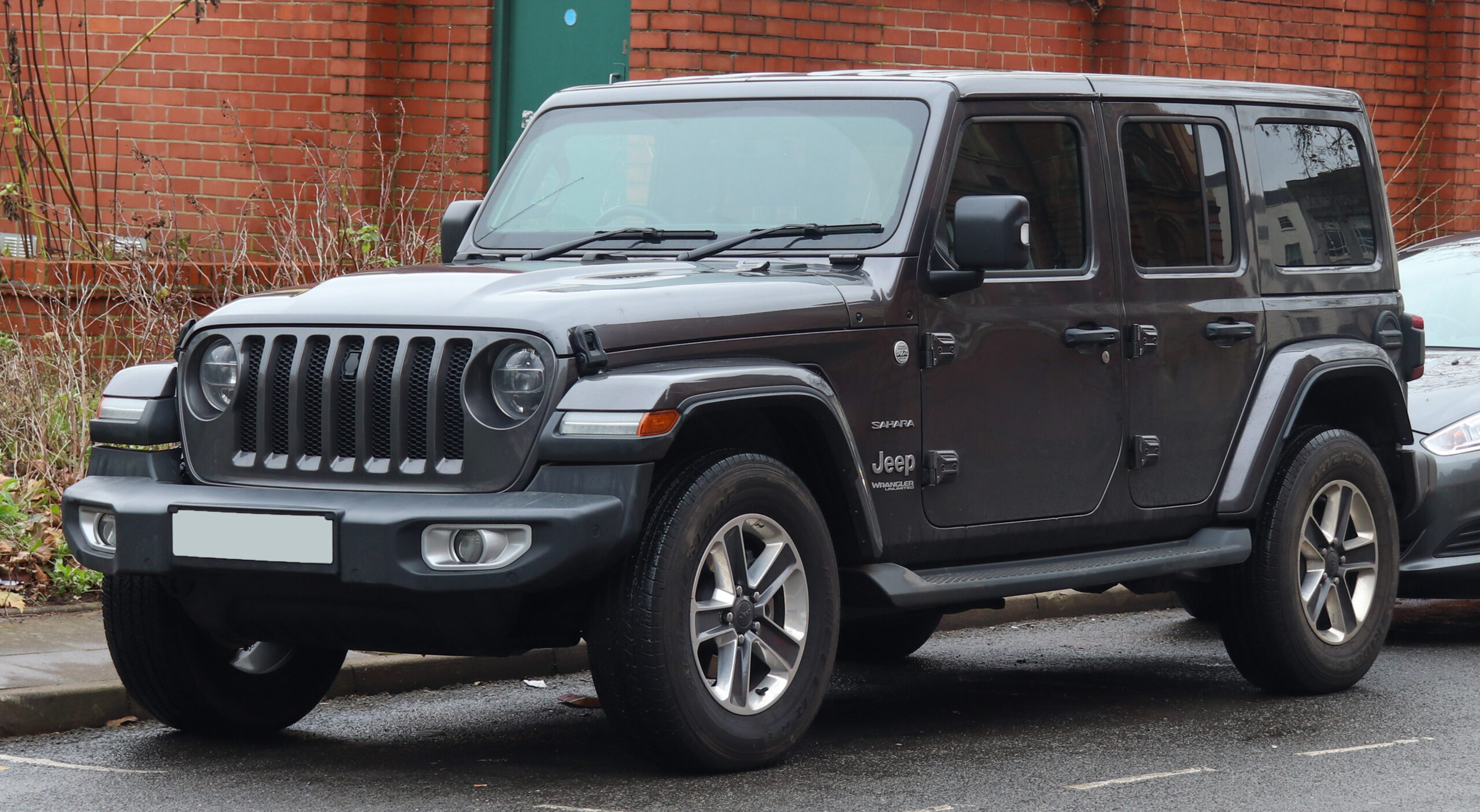
2. **Jeep Wrangler Unlimited**The Jeep Wrangler Unlimited represents a remarkable evolution from its storied military roots, transforming into what many consider the ultimate expression of off-road freedom, all while proudly retaining its iconic design and unmatched trail capability. The introduction of the four-door Unlimited model was a significant development, directly addressing the primary limitation of earlier Wrangler iterations by providing substantially more interior space, a crucial factor for extended adventure travel and comfortable passenger accommodation.
With its rear seats folded down, the Wrangler Unlimited offers a generous 72.4 cubic feet of cargo space. This expansive area is more than sufficient to accommodate a full complement of camping gear, essential recovery equipment, and provisions for multiple days spent deep within the backcountry. This increased capacity truly elevates its utility for serious overlanders who require ample storage for their expeditions.
What truly elevates the Wrangler Unlimited for overlanding is its unparalleled approach to customization and modularity. This vehicle can be extensively transformed to perfectly match virtually any adventure vision, ranging from subtle enhancements to extreme, purpose-built modifications. Features such as removable doors, a fold-down windshield, and a variety of roof options—including hardtop, soft top, or even no top—create a unique open-air experience. This distinct design deeply connects occupants with the natural environment in ways that no other modern production vehicle can truly replicate, fostering a profound sense of immersion.
Its modularity extends seamlessly to the drivetrain, offering a diverse selection of engine options to suit varying preferences and needs. These range from the efficient 2.0L turbocharged four-cylinder, known for its punchy performance, to the robust 3.6L Pentastar V6, a long-standing workhorse, and the torque-rich 3.0L EcoDiesel, which offers impressive low-end power for challenging situations. Regardless of engine choice, the Wrangler’s off-road credentials are, across all models, simply impeccable.
However, the Rubicon trim stands out as the pinnacle of factory off-road capability, boasting electronic disconnecting sway bars for maximum articulation, a formidable Rock-Trac 4:1 transfer case, electronic locking differentials for ultimate traction, and aggressive 33-inch all-terrain tires. These features collectively create a vehicle capable of conquering the most challenging terrain directly from the factory floor. The Wrangler’s renowned solid axles provide exceptional articulation over obstacles, while its short overhangs yield impressive approach and departure angles, allowing it to navigate steep inclines and declines with ease. Furthermore, the immense aftermarket support ecosystem for the Jeep means owners can find tailored solutions for virtually every overlanding need, from integrated kitchen systems and roof tents to extended-range fuel tanks and sophisticated upgraded suspension systems.
While the Wrangler’s on-road manners have seen significant improvements with the current JL generation, it unapologetically prioritizes trail capability over ultimate highway comfort. This trade-off is readily embraced by a dedicated community of enthusiasts who deeply appreciate the Wrangler Unlimited’s unique ability to reach incredibly remote destinations, all while delivering an authentic and exhilarating outdoor experience that few vehicles can rival.
Car Model Information: 2023 Dodge Charger GT
Name: Jeep Wrangler
Caption: Jeep Wrangler Unlimited, Sahara edition
Manufacturer: Jeep
Class: Compact SUV
Production: 1986–present
Predecessor: Jeep CJ
Layout: Front-engine, rear-wheel-drive layout,rear-wheel drive
Chassis: Body-on-frame
Related: AIL Storm
Categories: 1980s cars, 1990s cars, 2000s cars, 2010s cars, All-wheel-drive vehicles
Summary: The Jeep Wrangler is a series of compact and mid-size four-wheel drive off-road SUVs manufactured by Jeep since 1986, and currently in its fourth generation. The Wrangler JL, the most recent generation, was unveiled in late 2017 and is produced at Jeep’s Toledo Complex.
The Wrangler is a direct progression from the World War II Jeep, through the CJ (Civilian Jeeps) produced by Willys, Kaiser-Jeep, and American Motors Corporation (AMC) from the mid-1940s through the 1980s. Although neither AMC nor Chrysler (after it purchased AMC in 1987) have claimed that the Wrangler was a direct descendant of the original military model — both the CJ Jeeps and the conceptually consistent Wrangler, with their solid axles and open top, have been called the Jeep model as central to Jeep’s brand identity as the rear-engine 911 is to Porsche.
Similar to the Willys MB and the CJ Jeeps before it, all Wrangler models continue to use a separate body and frame, rigid live axles both front and rear, a tapering nose design with flared fenders, a fold-flat windshield, and can be driven without doors. Also, with few exceptions, they have part-time four-wheel drive systems, with the choice of high and low gearing, and standard open bodies with removable hard or soft tops. However, the Wrangler series was specifically redesigned to be safer and more comfortable on-road, to attract more daily drivers, by upgrading its suspension, drivetrain, and interior, compared to the CJ line. The suspension on all Wranglers included trackbars and anti-roll bars, and, from the 1997 TJ onwards, front and rear coil springs instead of the previous leaf springs.
From 2004 onward, the Wrangler has been complemented with long-wheelbase versions, called Wrangler Unlimited. 2004-2006 models were longer versions with 2 doors. In 2004, only automatic transmission-equipped “Unlimited” versions were sold. In 2005, both an automatic and manual 6-speed (NSG-370) were offered. Since 2007, the long-wheelbase Wranglers were four-door models, offering over 20 in (508 mm) more room. By mid-2017, the four-door models represented three-quarters of all new Wranglers on the market.
Get more information about: Jeep Wrangler
Buying a high-performing used car >>>
Brand: Jeep Model: Wrangler Unlimited
Price: $26,690 Mileage: 19,257 mi.
Read more about: Are You Driving an ‘Unreliable’ Car? 12 SUVs With Frequent Breakdown Histories You Need to Know About
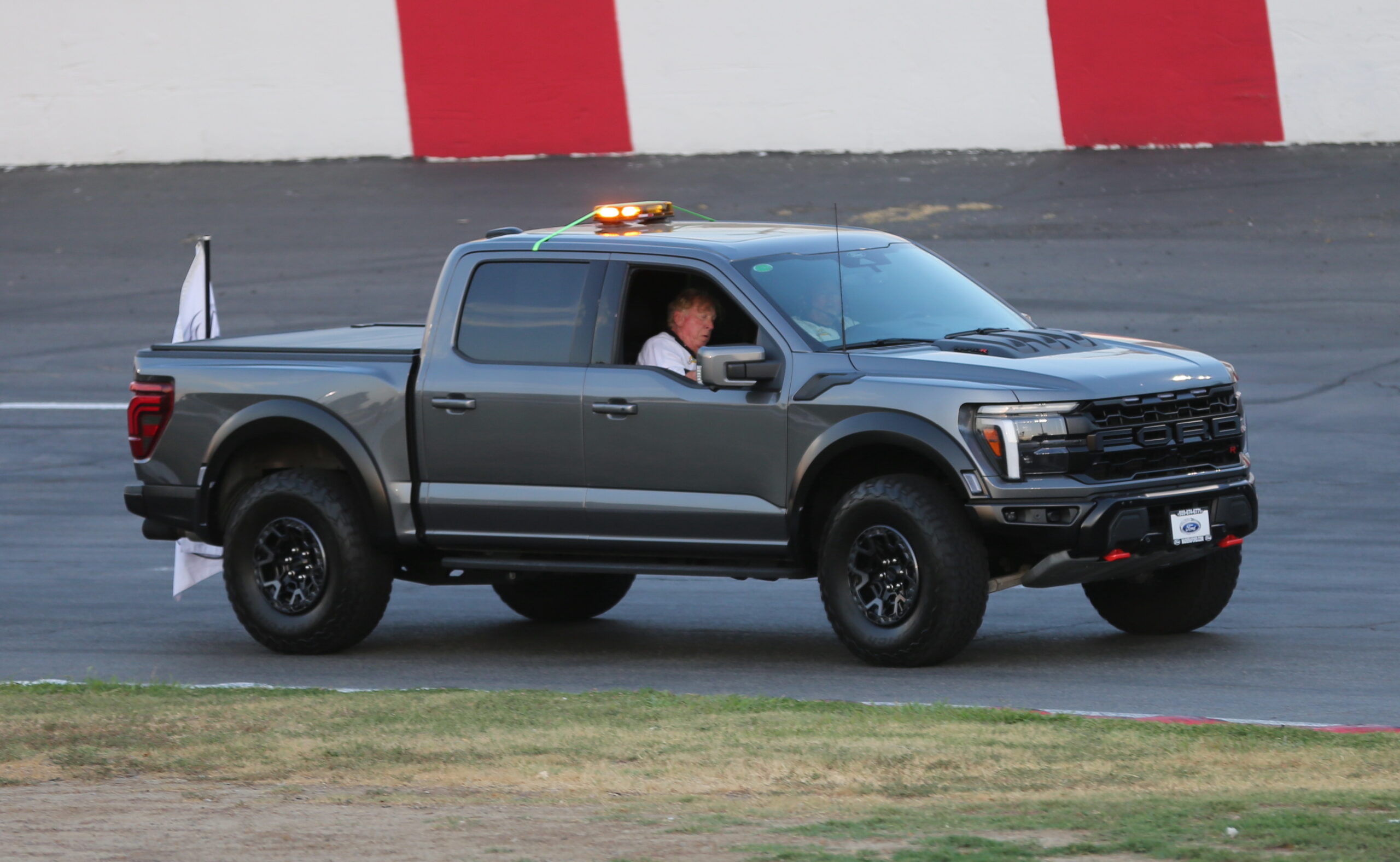
3. **Ford F-150 Raptor**The Ford F-150 Raptor completely redefines expectations for factory off-road performance, brilliantly combining supercar-level suspension technology with the unwavering practicality inherent in a full-size pickup truck. Engineered with high-speed desert running as its core design principle, the Raptor brings a distinctly different approach to overlanding. Its focus is squarely on covering vast distances of rough terrain with remarkable speed and comfort, rather than meticulously navigating highly technical, slow-speed obstacles.
This astonishing capability is primarily derived from its sophisticated Fox Live Valve internal bypass shocks. These advanced dampers electronically adjust their damping rates up to an incredible 500 times per second, providing an astonishing 13 inches of front suspension travel and an equally impressive 14 inches at the rear. This allows the Raptor to absorb massive impacts and maintain stability at speeds that would completely overwhelm conventional off-road vehicles, ensuring a surprisingly composed ride even in the harshest environments.
Power for this high-performance machine emanates from a twin-turbocharged 3.5-liter EcoBoost V6 engine, which develops a robust 450 horsepower and a commanding 510 lb-ft of torque. This immense power is efficiently channeled through a quick-shifting 10-speed automatic transmission and an advanced four-wheel-drive system, providing formidable traction and acceleration across a variety of surfaces. The Raptor’s intuitive Terrain Management System further enhances its versatility, offering seven distinct drive modes that allow the vehicle to precisely optimize its performance across diverse environments, from conquering deep, shifting sand to meticulously picking through rocky trails.
With a generous 11.5 inches of ground clearance and comprehensive robust underbody protection, the Raptor is engineered to confidently handle challenging off-road conditions, all while maintaining surprisingly high levels of comfort within the cabin. What truly makes the Raptor exceptionally valuable for overlanding applications is its foundation as a full-size truck platform, which inherently offers tremendous cargo capacity within its 5.5-foot bed. This substantial space can be configured to accommodate elaborate storage systems, portable refrigerators, essential water tanks, and a wide array of other crucial overlanding equipment, making it a highly adaptable mobile base.
The vehicle’s impressive 6,000-pound towing capacity further expands its utility, allowing it to easily tow additional gear or a small camper trailer for extended excursions. The SuperCrew cab configuration ensures ample interior space, providing comfortable seating for passengers and secure, climate-controlled storage for sensitive gear. While the Raptor’s widened stance necessitates careful navigation on exceptionally tight trails, and its overall size can be somewhat limiting in densely forested regions, for overlanding routes that span vast, wide-open spaces—from the expansive American Southwest to the rugged Australian Outback—few vehicles can genuinely match its unique combination of speed, comfort, and unwavering durability. The Raptor represents a specialized and highly effective approach to adventure travel, making it an ideal choice for those who prioritize covering maximum ground across challenging terrain, while simultaneously benefiting from the substantial cargo capacity and inherent comfort advantages of a full-size pickup truck.
Car Model Information: 2023 Dodge Charger GT
Name: Ford F-Series
Caption: 2022 Ford F-150 Lariat Luxury
Manufacturer: Ford Motor Company
Aka: Ford Lobo (Mexico, 1992–present)
Production: 1948–present
Class: Pickup truck#Full-size pickup truck
Layout: Front-engine, rear-wheel-drive layout,rear-wheel drive
Predecessor: 1941 Ford
Categories: All-wheel-drive vehicles, All Wikipedia articles written in American English, All articles that may contain original research, All articles with unsourced statements, Articles that may contain original research from September 2020
Summary: The Ford F-Series is a series of light-duty trucks marketed and manufactured by the Ford Motor Company since model year 1948 as a range of full-sized pickup trucks — positioned between Ford’s Ranger and Super Duty pickup trucks. Alongside the F-150 (introduced in 1975), the F-Series also includes the Super Duty series (introduced in 1999), which includes the heavier-duty F-250 through F-450 pickups, F-450/F-550 chassis cabs, and F-600/F-650/F-750 Class 6–8 commercial trucks.
Get more information about: Ford F-Series
Buying a high-performing used car >>>
Brand: Ford Model: F-150 Raptor
Price: $26,690 Mileage: 19,257 mi.
Read more about: Unleash Your Inner Adventurer: The Ultimate Guide to 10 Off-Roaders That Conquer Any Terrain

4. **Land Rover Defender**The reimagined Land Rover Defender masterfully honors its iconic heritage while seamlessly integrating cutting-edge technology, thereby forging a truly compelling and modern overlanding platform. Diverging from its more utilitarian predecessor, the new Defender achieves an impressive balance, delivering exceptional off-road capability alongside sophisticated on-road comfort. This makes it an ideal choice for discerning adventurers who demand both refinement and unwavering adventure readiness from their vehicle. Available in both a nimble 90 (two-door) and a more spacious 110 (four-door) configuration, the Defender offers a versatile range of options to meticulously match diverse travel needs and preferences.
The Defender’s formidable capability is rooted in its advanced Terrain Response 2 system, an intelligent technology that utilizes an array of sensors to continuously monitor driving conditions and automatically optimize the vehicle’s settings for the specific surface being traversed. This system operates in seamless concert with an electronic air suspension system, which possesses the remarkable ability to increase ground clearance to an impressive 11.5 inches when navigating demanding terrain. Conversely, it can lower the vehicle for improved aerodynamics and enhanced efficiency during highway travel. Furthermore, the system’s exceptional approach and departure angles, rated at 38 and 40 degrees respectively, often surpass those found in many purpose-built, dedicated off-roaders.
Adding to its impressive credentials, the Defender boasts an impressive 35.4-inch wading depth, a capability supported by a sophisticated Wade Sensing program. This allows the vehicle to confidently cross water obstacles that would undeniably prove insurmountable for most competitors, significantly expanding its adventurous reach. Inside the cabin, the Defender achieves a remarkable fusion of practical utility and premium appointments. The interior features durable materials that are engineered to resist wear and tear, all while steadfastly upholding Land Rover’s esteemed reputation for luxury and meticulous craftsmanship. Storage solutions are plentiful, with cleverly integrated compartments thoughtfully placed throughout the interior, and a side-hinged rear door that ensures convenient and unhindered access to the expansive cargo area.
For those requiring additional carrying capacity for bulky gear, the available Expedition Roof Rack is an invaluable accessory. Additionally, an optional integrated air compressor facilitates easy and precise tire pressure adjustments, a critical function for optimizing traction and ride quality across varying terrain conditions. Power options for the Defender range from the standard P300 turbocharged four-cylinder engine to the more potent P400 mild-hybrid six-cylinder, both of which are expertly paired with a smooth eight-speed automatic transmission and a permanent four-wheel-drive system, ensuring robust performance in any situation.
While the Defender’s reliance on complex electronic systems may raise some concerns regarding remote-area repairs for the most extreme expeditions, these very technologies also unlock levels of capability previously considered unachievable in off-road vehicles. Land Rover’s extensive global dealer network provides a degree of reassurance for international travelers, although aftermarket support for the new generation remains somewhat less developed compared to platforms with a longer, more established history. For those adventurers seeking a truly premium overlanding experience that excels equally on paved highways and in the most challenging backcountry conditions, the new Defender presents an undeniably compelling, albeit luxury-priced, option.
Car Model Information: 2023 Dodge Charger GT
Caption: 2015 Land Rover Defender 90 (Australia)
Name: Land Rover Defender
Manufacturer: ubl
Class: Small offroader
Aka: Land Rover 90, Ninety, 110, One Ten, One Two Seven (1983–1990)
Production: ubl
Predecessor: Land Rover Series III
Successor: Land Rover Defender (L663)
Assembly: Shah Alam,Kulim
Layout: Front-engine, four-wheel-drive layout,four-wheel drive
Categories: 1990s cars, 2000s cars, 2010s cars, All-wheel-drive vehicles, All Wikipedia articles written in British English
Summary: The Land Rover Defender (introduced as the Land Rover One Ten, joined in 1984 by the Land Rover Ninety, plus the extra-length Land Rover One Two Seven in 1985) is a series of British off-road cars and pickup trucks. They have four-wheel drive, and were developed in the 1980s from the Land Rover series which was launched at the Amsterdam Motor Show in April 1948. Following the 1989 introduction of the Land Rover Discovery, the term ‘Land Rover’ became the name of a broader marque, no longer the name of a specific model; thus in 1990 Land Rover renamed them as Defender 90 and Defender 110 and Defender 130 respectively.
The vehicle, a British equivalent of the Second World War derived (Willys) Jeep, gained a worldwide reputation for ruggedness and versatility. With a steel ladder chassis and an aluminium alloy bodywork, the Land Rover originally used detuned versions of Rover engines.
Though the Defender was not a new generation design, it incorporated significant changes compared to the Land Rover series, such as adopting coil springs front and rear. Coil springs offered both better ride quality and improved axle articulation. The addition of a centre differential to the transfer case gave the Defender permanent four-wheel-drive capability. Both changes were derived from the original Range Rover, and the interiors were also modernised. Whilst the engines were carried over from the Series III, a new series of modern and more powerful engines was progressively introduced.
Even when ignoring the series Land Rovers and perhaps ongoing licence products, the 90/110 and Defender models’ 33-year production run were ranked as the sixteenth longest single-generation car in history in 2020.
In 2020, Jaguar Land Rover introduced an all new generation of Land Rover Defender Land Rover Defender (L663) switching from body on chassis to integrated bodywork and from live, rigid axles to all around independent suspension.
Get more information about: Land Rover Defender
Buying a high-performing used car >>>
Brand: Land Rover Model: Defender
Price: $26,690 Mileage: 19,257 mi.
Read more about: The 14 Essential Questions to Ask Before Buying a Car: Your Comprehensive Guide to Safety and Value

5. **Toyota Land Cruiser**The Toyota Land Cruiser unequivocally represents the gold standard for global expedition vehicles, having earned unparalleled respect and a revered status in the most remote corners of the world where reliability is not merely a preference, but a matter of survival. Although it was recently discontinued in the North American market, used models continue to be highly sought after, and the vehicle steadfastly remains Toyota’s flagship overlander in international markets, a testament to its enduring legacy and capabilities.
At the very core of the Land Cruiser’s legendary capability lies its exceptional build quality and a distinct engineering philosophy that prioritizes durability above all else. This unwavering commitment results in a vehicle meticulously designed and built to operate reliably for hundreds of thousands of miles, even when subjected to the harshest conditions imaginable across the globe. This fundamental design ethos is what truly sets it apart and underpins its global reputation.
The heart of the Land Cruiser’s off-road prowess is its robust full-time four-wheel-drive system, featuring a highly effective Torsen limited-slip center differential and a resilient two-speed transfer case. This formidable drivetrain, when coupled with advanced technologies such as Crawl Control and Multi-Terrain Select, allows the nearly 6,000-pound vehicle to meticulously navigate technical terrain with surprising finesse and unwavering confidence. Additionally, the Kinetic Dynamic Suspension System (KDSS) automatically adjusts the sway bars, skillfully increasing wheel articulation off-road while simultaneously maintaining optimal on-road stability, offering a superior ride in diverse conditions. Crucially, these sophisticated systems are engineered with multiple redundancies and fail-safes, a design philosophy that prioritizes getting you home safely above maximizing ultimate performance.
Inside, the Land Cruiser’s interior offers a perfect and harmonious balance of traditional luxury and uncompromising functionality. Three rows of seating can comfortably accommodate up to eight passengers, while the versatility of folding the rear seats provides an impressive 82.8 cubic feet of cargo space, ample for extensive expedition gear. The cabin is adorned with premium materials that are not only aesthetically pleasing but also engineered to withstand the rigors of abuse, ensuring longevity. Thoughtful touches, such as cooled storage boxes, further enhance comfort during long-distance travel, contributing to a more enjoyable journey. The split rear tailgate design also creates a convenient seating area, perfect for camp setup or efficient gear organization.
What truly distinguishes the Land Cruiser from its myriad competitors is its extensive global support network and unparalleled parts availability. In the remotest regions of Africa, Asia, and Australia, areas where overlanding culture runs deepest and is a way of life, Land Cruiser components remain remarkably obtainable, a critical advantage when other vehicles would be hopelessly stranded. This comprehensive support, combined with the vehicle’s legendary 25-year design life, eloquently explains why humanitarian organizations, expedition companies, and serious overlanders continue to choose the Land Cruiser, often despite its substantial premium price point. For those planning truly remote and high-stakes expeditions where failure is simply not an option, the Toyota Land Cruiser steadfastly remains the definitive and most trusted choice.
Car Model Information: 2023 Dodge Charger GT
Name: Toyota Land Cruiser
Caption: 2021 Toyota Land Cruiser ZX (VJA300, Colombia)
Manufacturer: Toyota
Production: 1951–present
Class: unbulleted list
Layout: Front-engine, four-wheel-drive
Categories: 1960s cars, 1970s cars, 1980s cars, 1990s cars, 2000s cars
Summary: The Toyota Land Cruiser, also sometimes spelt as LandCruiser, is a series of four-wheel drive vehicles produced by the Japanese automobile manufacturer Toyota. It is Toyota’s longest running series of models. As of 2019, the sales of the Land Cruiser totalled more than 10 million units worldwide. Production of the first generation of the Land Cruiser began in 1951. The Land Cruiser has been produced in convertible, hardtop, station wagon and cab chassis body styles. The Land Cruiser’s reliability and longevity have led to huge popularity, especially in Australia, where it is the best-selling body-on-frame, four-wheel drive vehicle. Toyota also extensively tests the Land Cruiser in the Australian outback – considered to be one of the toughest operating environments in both temperature and terrain. In Japan, the Land Cruiser was once exclusive to Toyota Japanese dealerships called Toyota Store. Since 1990, the smaller variation of the Land Cruiser has been marketed as the Land Cruiser Prado. Described as a ‘light-duty’ version of the Land Cruiser by Toyota, it features a different design compared to the full-size model and, up until 2023, it remains the only comfort-oriented Land Cruiser available with a short-wheelbase 3-door version. As of 2023, the full-size Land Cruiser was available in many markets. Exceptions include the United States (since 2021 where the smaller Land Cruiser Prado has been sold under the Land Cruiser name since 2024), Canada (since 1996), Malaysia (which receives the Lexus LX instead), Hong Kong, Macau, South Korea, Brazil, and most of Europe. In Europe, the only countries where the full-size Land Cruiser is officially sold are Gibraltar, Moldova, Russia, Belarus, and Ukraine. The Land Cruiser is hugely popular in the Middle East, Russia, Australia, India, Bangladesh, Pakistan, New Caledonia, and Africa. It is used by farmers, the construction industry, non-governmental and humanitarian organizations, the United Nations, national armies (often the pickup version), and irregular armed groups who turn them into “technicals” by mounting machine guns in the rear. In August 2019, cumulative global sales of the Land Cruiser family surpassed 10 million units.
Get more information about: Toyota Land Cruiser
Buying a high-performing used car >>>
Brand: Toyota Model: Land Cruiser
Price: $26,690 Mileage: 19,257 mi.
Read more about: Built to Last: 12 Reliable Sedans That Will Cruise Past 200,000 Miles
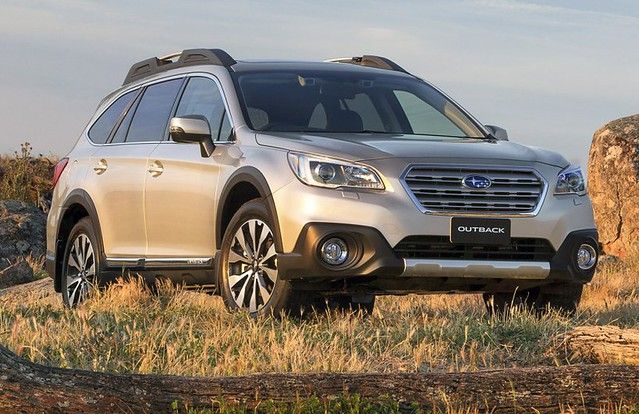
6. **Subaru Outback Wilderness**The Subaru Outback Wilderness represents a thoughtful and strategic evolution of the crossover concept, bringing a significantly increased level of off-road capability to a platform already deeply beloved and trusted by outdoor enthusiasts. While it may not possess the extreme articulation or outright ground clearance of traditional body-on-frame SUVs, the Outback Wilderness masterfully carves out its own distinct niche by striking a remarkable balance: offering impressive off-pavement capability harmonized with the brand’s characteristic on-road comfort and excellent fuel efficiency.
One of its key enhancements is an impressive 9.5 inches of ground clearance, a significant increase over the standard Outback model. This, coupled with improved approach and departure angles, empowers the vehicle to confidently navigate moderately challenging trails and uneven terrain. Power is supplied by a robust 2.4-liter turbocharged boxer engine, which generates 260 horsepower and a strong 277 lb-ft of torque. This engine is seamlessly paired with a continuously variable transmission (CVT) that features an enhanced low-ratio mode, specifically designed for improved control and confidence during steep descents and technical maneuvers.
The Outback’s renowned symmetrical all-wheel-drive system has been meticulously recalibrated in the Wilderness model to optimize traction specifically in loose and challenging conditions. Complementing this, the X-Mode system provides specialized settings for navigating snow/dirt and even deep snow/mud, further bolstering its versatility. These advanced technologies, working in concert with robust Yokohama Geolandar all-terrain tires, create a vehicle that confidently handles forest service roads and moderate trails with a surprising degree of assuredness, inspiring confidence in its drivers.
Where the Outback Wilderness truly distinguishes itself is in its ability to foster a comfortable and convenient basecamp for extended stays in nature. Its robust built-in roof rack is capable of supporting an impressive 700 pounds when stationary, which is more than sufficient for accommodating most popular rooftop tents and additional gear. The interior offers a generous 75.7 cubic feet of cargo space with the rear seats folded, easily accommodating extensive camping gear, while the stargazer-friendly panoramic moonroof enhances the connection with the natural environment, bringing the outdoors inside. Furthermore, the durable, water-resistant StarTex upholstery is specifically designed to withstand the inevitable mud, moisture, and general wear and tear that accompany backcountry adventures, ensuring easy cleanup and lasting appeal.
The Outback Wilderness achieves commendable fuel economy ratings of 22/26 mpg city/highway, which provides significantly better efficiency than many traditional, heavier-duty off-roaders. This superior fuel economy, combined with its comfortable and composed highway manners, positions the Wilderness as an ideal platform for those whose adventures involve substantial pavement travel before ultimately reaching their desired trailheads. While it is not designed to conquer extreme challenges like the Rubicon Trail, the Outback Wilderness truly excels at providing access to remote campsites and moderate backcountry routes, all while doubling as a highly practical and comfortable daily driver. This impressive versatility makes it an increasingly popular and compelling choice for weekend adventurers and those seeking a balanced, capable companion for their outdoor pursuits.
Car Model Information: 2013 Subaru Outback 2.5i Limited
Name: Subaru Outback
Caption: 2023 Subaru Outback Premium
Manufacturer: Subaru
Production: 1994–present
ModelYears: 1995–present
Assembly: Ota, Gunma
Aka: Subaru Legacy
Class: Mid-size car
BodyStyle: station wagon
Categories: All Wikipedia articles written in American English, All articles with unsourced statements, Articles containing Japanese-language text, Articles with short description, Articles with unsourced statements from April 2012
Summary: The Subaru Outback is an automotive nameplate used by the Japanese automaker Subaru for two different themed vehicles: a Legacy-derived station wagon, the Outback (1994–present, also sold as Legacy Outback in some markets), and an Impreza-derived off-road themed hatchback, the Outback Sport (1994–2011). Most versions of the Outback wagon and Outback Sport have had all-wheel drive as standard equipment.
Get more information about: Subaru Outback
Buying a high-performing used car >>>
Brand: Subaru Model: Outback
Price: $7,795 Mileage: 175,533 mi.
Read more about: Beyond the Sedan: Your Essential Guide to 12 Top SUVs for Retirees in 2025, Engineered for Comfort and Lasting Value
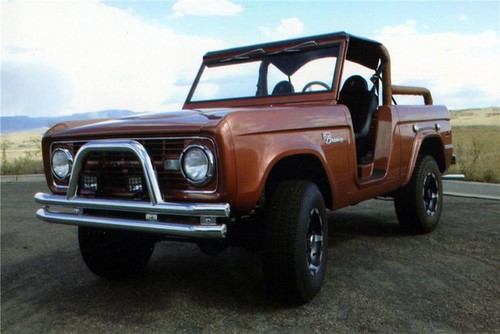
7. **Ford Bronco**The reborn Ford Bronco arrives on the scene as a truly purpose-built adventure vehicle, masterfully blending a retro-inspired design aesthetic with thoroughly modern, cutting-edge off-road technology. Available in both a nimble two-door and a more spacious four-door configuration, the Bronco directly challenges the Jeep Wrangler’s decades-long dominance of the dedicated off-roader segment. Ford’s engineers meticulously developed the Bronco with an unwavering focus on trail capability, resulting in a vehicle that is genuinely capable of tackling challenging terrain straight from the factory floor, all while maintaining reasonable and comfortable on-road manners for daily driving.
The Bronco’s formidable capability stems from its sophisticated four-wheel-drive system, which is available with an advanced electromechanical transfer case. This system allows for on-demand shifting between 2H (two-wheel drive high), 4H (four-wheel drive high), and 4L (four-wheel drive low) modes, adapting to various conditions. The available advanced 4×4 system further enhances this with automatic on-demand engagement, simplifying traction management. These robust systems work in precise concert with Ford’s innovative G.O.A.T. (Goes Over Any Type of Terrain) modes, which intelligently optimize vehicle settings for specific conditions, ranging from slippery surfaces to extreme rock crawling. For maximum articulation on challenging terrain, the available disconnecting front sway bar is a game-changer, while the Bronco’s independent front suspension provides a notably better ride quality than many solid-axle competitors, especially on uneven roads.
What truly makes the Bronco particularly well-suited for overlanding is its thoughtful and integrated approach to enhancing the outdoor experience. Features such as removable doors and roof panels allow for an exhilarating open-air travel experience, deeply connecting occupants with nature. Furthermore, the available marine-grade vinyl interior and rubberized flooring, complete with convenient drain plugs, make cleanup a breeze after muddy adventures, ensuring practicality. The Bronco’s modular design extends to an extensive factory accessories list, with items specifically engineered to integrate seamlessly with the vehicle’s structure, offering a high degree of customization and functionality. The four-door model provides a generous 83 cubic feet of cargo space with the rear seats folded, offering ample room for all essential camping equipment and gear.
Power options for the Bronco include a spirited 2.3-liter EcoBoost four-cylinder engine, producing 300 horsepower and 325 lb-ft of torque, and a more potent 2.7-liter EcoBoost V6, delivering 330 horsepower and an impressive 415 lb-ft of torque. Both engines provide strong and responsive performance, crucial for confident off-road driving. While the Bronco’s aftermarket support ecosystem is still developing compared to long-established platforms like the Jeep Wrangler, Ford’s proactive partnerships with reputable off-road companies ensure a rapidly growing array of specialized accessories and upgrades. For those seeking to push performance even further, the Bronco Raptor variant elevates capabilities with an upgraded suspension, a wider stance, and increased power.
For adventurers seeking a dedicated vehicle that combines modern amenities with truly impressive off-road capability, the Ford Bronco delivers an exciting and highly compelling new option in the vibrant overlanding space. Its blend of heritage, innovation, and thoughtful outdoor features makes it a serious contender for any expedition into the wild.” , “_words_section1”: “1997
Car Model Information: 1970 Ford Bronco
Name: Ford Bronco
Caption: 2021 Ford Bronco Outer Banks (4-door)
Manufacturer: Ford Motor Company
Production: 1965–1996,2021–present
Class: Compact SUV
Layout: Front-engine, four-wheel-drive
BodyStyle: SUV
Successor: Ford Expedition
ModelYears: 1966–1996,2021–present
Categories: 1970s cars, 1980s cars, 1990s cars, 2020s cars, All-wheel-drive vehicles
Summary: The Ford Bronco is a model line of SUVs manufactured and marketed by Ford. The first SUV model developed by the company, five generations of the Bronco were sold from the 1966 to 1996 model years. A sixth generation of the model line was introduced for the 2021 model year. The nameplate has been used on other Ford SUVs, namely the 1984–1990 Bronco II compact SUV, the 2021 Bronco Sport compact crossover, and the China-only 2025 Bronco New Energy.
Originally developed as a compact off-road vehicle using its own chassis, the Bronco initially competed against the Jeep CJ-5 and International Scout. For 1978, Ford enlarged the Bronco, making it a short-wheelbase version of the F-Series pickup truck; the full-size Bronco now competed against the Chevrolet K5 Blazer and Dodge Ramcharger.
Following a decline in demand for large two-door SUVs, Ford discontinued the Bronco after the 1996 model year, replacing it with the four-door Ford Expedition; followed by the larger Ford Excursion. After a 25-year hiatus, the sixth-generation Bronco was reintroduced in 2021 as a mid-size two-door SUV. It is also offered as a full-size four-door SUV with a 16 in (41 cm) longer wheelbase. It competes directly with the Jeep Wrangler as both a two-door and a four-door (hardtop) convertible.
From 1965 to 1996, the Ford Bronco was manufactured by Ford at its Michigan Truck Plant in Wayne, Michigan, where it also manufactures the sixth-generation version.
Get more information about: Ford Bronco
Buying a high-performing used car >>>
Brand: Ford Model: Bronco
Price: $79,999 Mileage: 3,000 mi.
Read more about: Are You Driving an ‘Unreliable’ Car? 12 SUVs With Frequent Breakdown Histories You Need to Know About
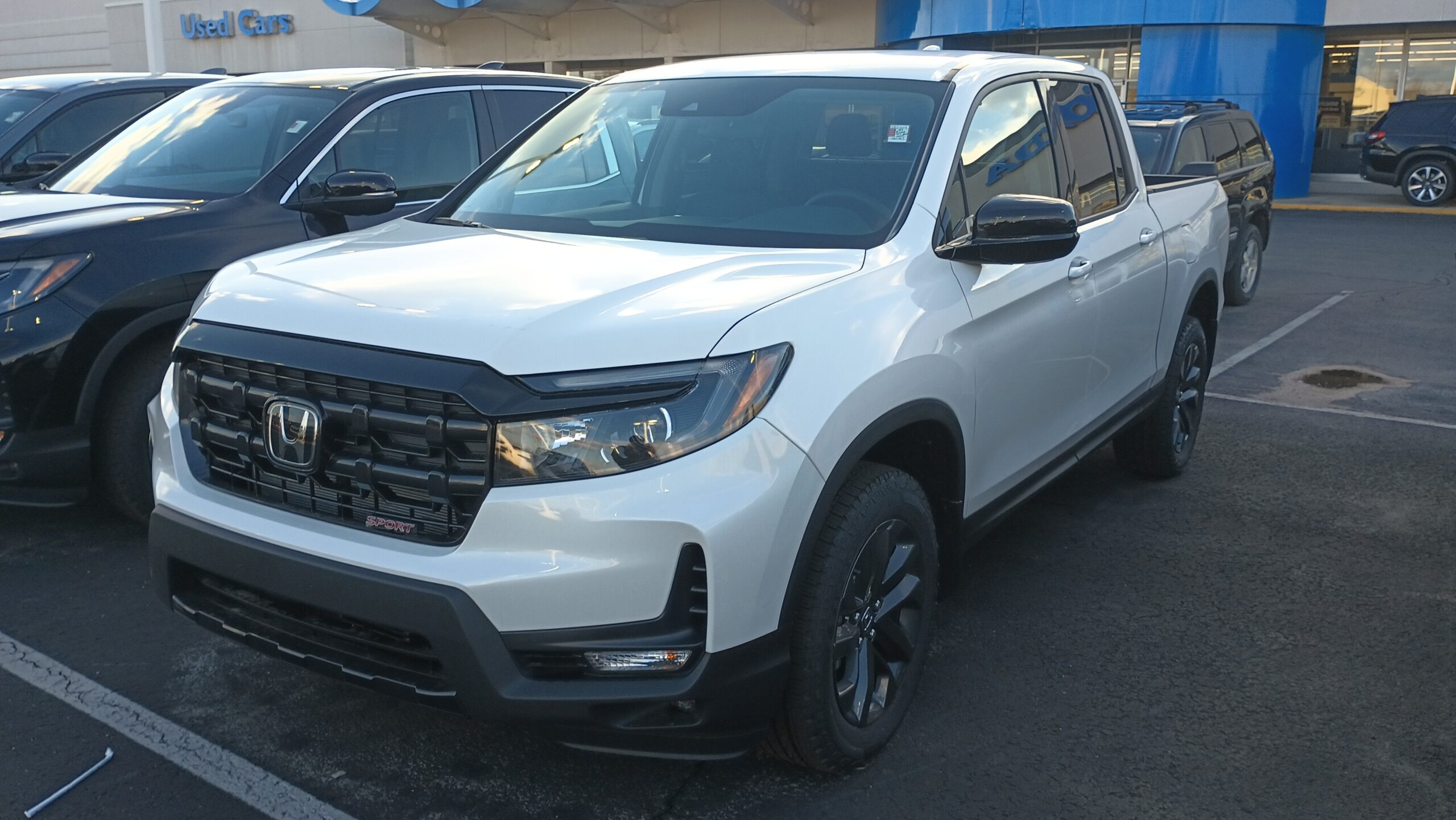
8. **Honda Ridgeline**The Honda Ridgeline presents a distinctive proposition in the overlanding landscape, challenging traditional pickup truck conventions with its unibody construction. This design choice fosters a uniquely balanced approach to adventure travel, skillfully prioritizing on-road comfort without compromising its inherent off-pavement capabilities. While some hardcore off-road enthusiasts might initially overlook the Ridgeline due to its departure from a conventional body-on-frame architecture, experienced overlanders often come to appreciate its intelligently engineered features that genuinely enhance the overall camping experience.
The vehicle’s independent suspension system is a cornerstone of its appeal, delivering a superior ride quality that effectively smooths out washboard dirt roads—surfaces that can prove notoriously punishing in more conventional trucks. Simultaneously, this suspension offers sufficient articulation to confidently handle moderate off-road conditions. Powering the Ridgeline is a naturally aspirated 3.5-liter V6 engine, producing a robust 280 horsepower and 262 lb-ft of torque, efficiently managed by a nine-speed automatic transmission. Its intelligent Variable Torque Management (i-VTM4) all-wheel-drive system further bolsters its capability, able to direct up to 70 percent of engine torque to the rear wheels and then send 100 percent of that torque to either the left or right rear wheel, ensuring effective traction when conditions become challenging.
With 7.6 inches of ground clearance, the Ridgeline is not designed for extreme rock crawling, but it navigates forest service roads and moderate trails with a confident composure. What truly sets the Ridgeline apart for camping adventures are its innovative and highly practical storage solutions. The signature weather-sealed In-Bed Trunk offers 7.3 cubic feet of secure, lockable storage discreetly located beneath the bed floor—an ideal spot for safeguarding valuable equipment from the elements. Complementing this, the dual-action tailgate provides enhanced access by opening both downward in the traditional manner and to the side, simplifying loading and unloading. Furthermore, the truck bed can be equipped with an integrated audio system, transforming the Ridgeline into a unique outdoor entertainment hub at any campsite.
The Ridgeline also boasts commendable fuel economy ratings of 18 mpg city and 24 mpg highway, offering notably better efficiency than many traditional pickups and extending its range between fill-ups. Its 19.5-gallon fuel tank supports journeys to remote destinations with adequate reserves. While the aftermarket support for the Ridgeline remains more specialized and less ubiquitous compared to that for traditional trucks, a growing number of companies, including Fab Fours and SSO, are now offering bumpers, skid plates, and suspension lifts, enhancing its adventure readiness. For overlanders whose journeys predominantly involve unpaved roads rather than highly technical trails, the Ridgeline’s blend of comfort, efficiency, and clever design makes it an unconventional yet supremely practical and appealing choice.
Car Model Information: 2025 Honda Ridgeline RTL+
Name: Honda Ridgeline
Manufacturer: Honda
Caption: 2022 Honda Ridgeline
Production: 2005–early 2015,2016–present
ModelYears: 2006–2014,2017–present
Assembly: Alliston, Ontario
Class: Pickup truck#Mid-size pickup truck
BodyStyle: 4-door pickup truck
Layout: ubl
Categories: 2010s cars, All-wheel-drive vehicles, All Wikipedia articles written in American English, Articles with short description, CS1 maint: multiple names: authors list
Summary: The Honda Ridgeline is a mid-size pickup truck manufactured and marketed by Honda since the 2006 model year, over two generations in a unibody, crew–cab, short-box configuration with a transverse-mounted engine.
Get more information about: Honda Ridgeline
Buying a high-performing used car >>>
Brand: Honda Model: Ridgeline
Price: $37,461 Mileage: 5,874 mi.
Read more about: Beyond the Odometer: 15 Legendary Engines That Defy Time, Powering On Strong Past 200,000 Miles and into Automotive Immortality
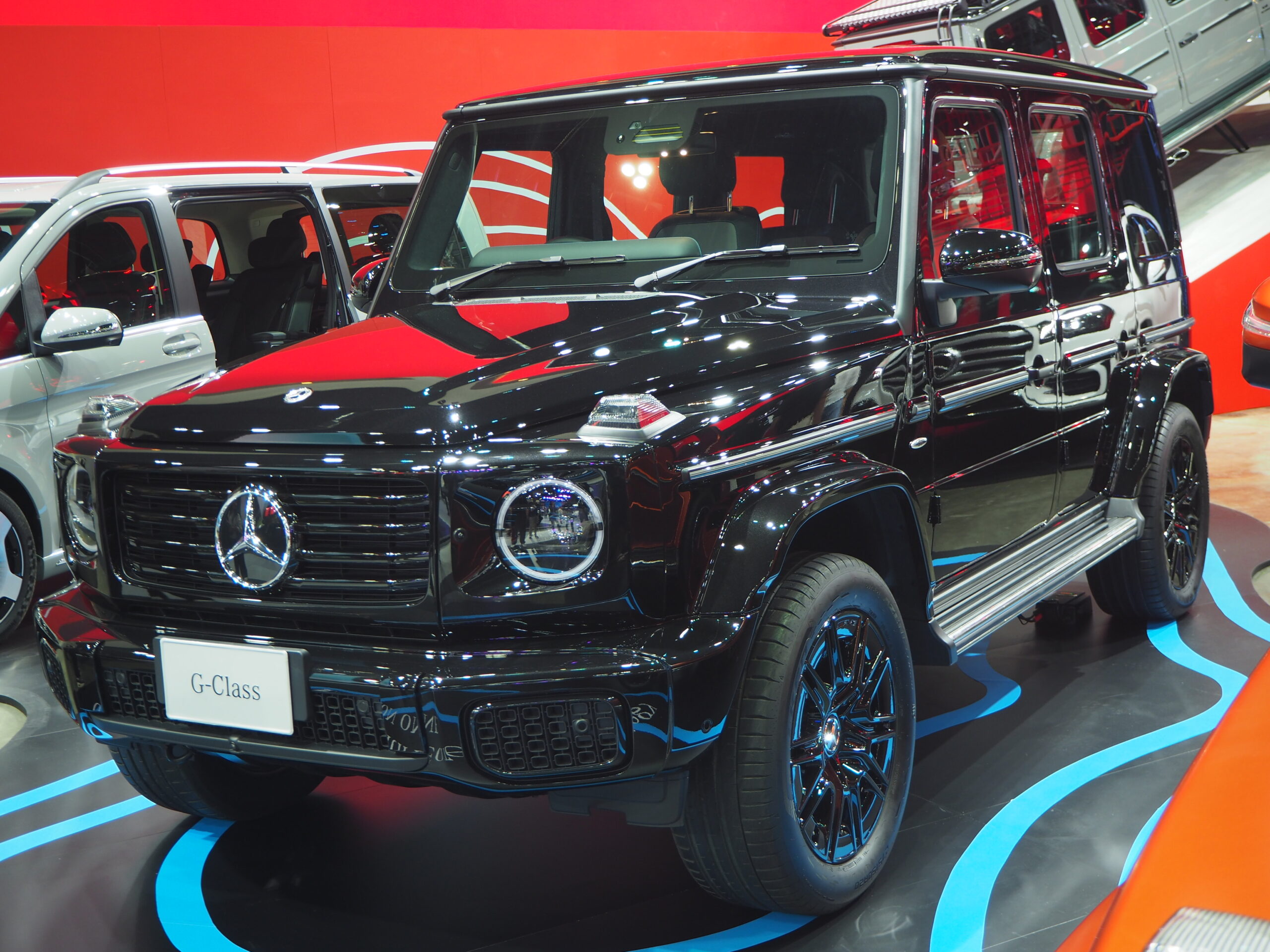
9. **Mercedes-Benz G-Class**The Mercedes-Benz G-Class, affectionately known as the G-Wagen, occupies a rare and coveted space where sheer luxury, undeniable status, and formidable off-road capability converge. Tracing its origins to a military vehicle design from the 1970s, the G-Class has meticulously evolved into a supremely premium SUV, all while steadfastly retaining its iconic, unmistakable boxy silhouette and its intrinsic off-road DNA. Despite its elevated luxury positioning, the G-Class stands as one of the most capable production vehicles available for serious overlanding adventures, masterfully combining sophisticated electronic aids with traditional, robust mechanical systems that truly excel in the most challenging terrain.
At the very core of the G-Class’s impressive off-road prowess lies its trio of 100-percent locking differentials—one each for the front, center, and rear axles. This unparalleled feature is unmatched by any other production luxury vehicle, providing absolute traction control in extreme situations. These mechanical marvels, working in concert with a sophisticated suspension system and a substantial 9.5 inches of ground clearance, empower the G-Class to methodically navigate technical obstacles that would render most other vehicles immobile. Its formidable approach angle of 30 degrees, breakover angle of 26 degrees, and departure angle of 30 degrees further underscore its exceptional performance on severe terrain.
While recent generations have thoughtfully integrated an independent front suspension, moving away from the traditional solid front axle, the G-Class has managed to retain its legendary capability while simultaneously enhancing its on-road manners for a more comfortable daily driving experience. Inside, the G-Class offers an interior experience that is truly unlike any other overlanding vehicle. Meticulously crafted materials, exquisite finishes, and advanced technology converge to create a supremely premium and luxurious environment, providing a striking contrast to its rugged and utilitarian exterior. The cabin, when the rear seats are folded, provides a useful 68.6 cubic feet of cargo space, which is sufficient for essential expedition gear despite the vehicle’s relatively compact exterior dimensions.
Power for the G-Class is delivered by a formidable 4.0-liter twin-turbocharged V8 engine. In the G550 variant, it produces a robust 416 horsepower and 450 lb-ft of torque, while the hand-built AMG G63 model elevates this to a staggering 577 horsepower and 627 lb-ft of torque. Both engines provide abundant power, crucial for navigating challenging off-road scenarios, though it is important to note that fuel economy remains a significant limitation for these powerful luxury machines. The G-Class’s esteemed global reputation ensures that some parts availability can be found even in remote regions, offering a degree of reassurance for adventurous travelers, though servicing costs naturally reflect its premium market positioning. For overlanders who aspire to journey in an unrivaled blend of luxury and capability, few vehicles can truly match the G-Class’s unique combination of attributes, provided the substantial price of entry is not a prohibitive factor.
Read more about: Recall These? The Ultimate Showdown: 12 Coupes That Went From Hot to Humiliating in the Great American vs. European Car Wars
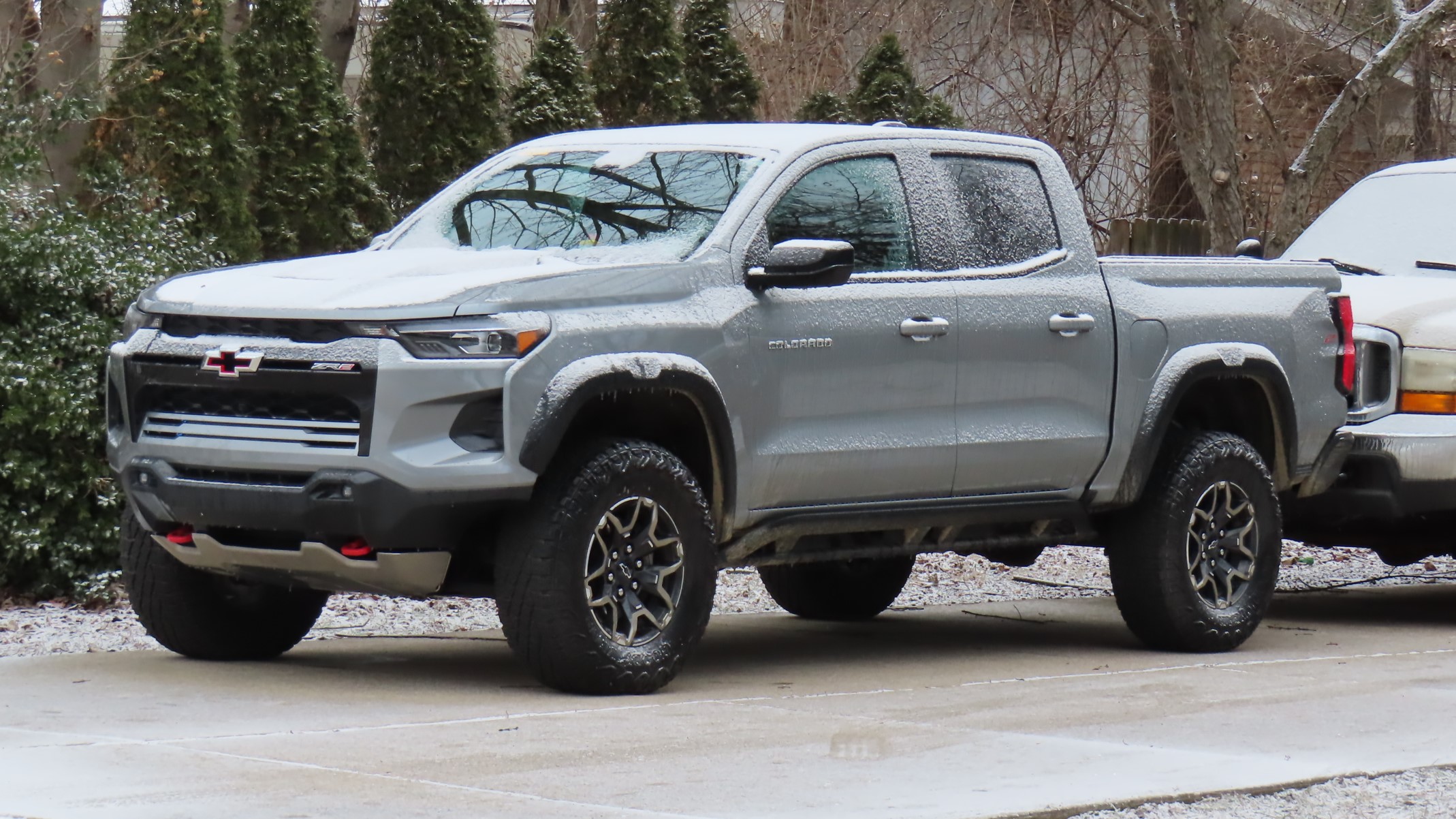
10. **Chevrolet Colorado ZR2**The Chevrolet Colorado ZR2 stands out as a masterclass in midsize truck engineering, delivering truly exceptional off-road performance while maintaining practical dimensions that allow for confident navigation through tight trails. What unequivocally distinguishes the ZR2 from its midsize truck counterparts is its highly sophisticated Multimatic DSSV (Dynamic Suspensions Spool Valve) shock absorbers. This cutting-edge technology, originally derived from Formula 1 racing, has been meticulously adapted for demanding off-road applications, providing outstanding performance across a diverse range of terrains, from high-speed desert runs to intricate technical rock crawling, all without the harsh ride quality that often accompanies overly aggressive, off-road-focused suspensions.
The ZR2’s purpose-built design incorporates a substantial 2-inch suspension lift, a wider 3.5-inch track for enhanced stability, and robust skid plates meticulously placed to protect vital underbody components. Complementing these physical enhancements are front and rear electronic locking differentials, which provide uncompromising traction in the most challenging conditions. A thoughtfully modified front bumper further increases the approach angle to an impressive 30 degrees. With a commanding 8.9 inches of ground clearance and robust rock sliders, the ZR2 is engineered to confidently traverse technical trails that would undoubtedly defeat most other factory pickup trucks. For those seeking even greater capability, the optional Bison package, developed in a strategic partnership with American Expedition Vehicles (AEV), adds steel bumpers, additional underbody protection, and upgraded wheels, creating an even more formidable overlanding platform directly from the factory.
Power options for the ZR2 include a potent 3.6-liter V6 engine, producing 308 horsepower and 275 lb-ft of torque, and a highly regarded 2.8-liter Duramax turbodiesel, which delivers 181 horsepower and a substantial 369 lb-ft of torque. Both engines are expertly paired with an eight-speed automatic transmission. The Duramax diesel engine, in particular, is exceptionally well-suited for overlanding, offering impressive torque at low RPMs and superior fuel economy, which translates to an extended range between fill-ups and excellent low-speed control—critical advantages on technical terrain.
The ZR2’s relatively compact dimensions, being 16.8 inches shorter and 5.6 inches narrower than a full-size Silverado, allow it to navigate tight, overgrown trails with greater ease while still providing a highly useful 5-foot bed for cargo. What makes the Chevrolet Colorado ZR2 particularly appealing for overlanding is its remarkable combination of exceptional off-road capability and practical daily usability. While purpose-built for the rigors of off-road exploration, the truck maintains reasonable and comfortable on-road manners, allowing it to seamlessly serve as practical transportation between adventures. Its aftermarket support continues to grow, with numerous companies now offering specialized bed racks, rooftop tents, and storage systems specifically designed for the ZR2. For those seeking a midsize truck platform that can confidently reach remote destinations without requiring excessive modifications, the Colorado ZR2 delivers factory-engineered capability that few competitors can truly match.
Car Model Information: 2023 Dodge Charger GT
Name: Chevrolet Colorado
Caption: 2024 Chevrolet Colorado Z71
Manufacturer: General Motors
Production: 2003–2012, 2014–present (US),2004–2020
(Thailand),2011–present (Brazil)
Class: Pickup truck,Pickup truck
Layout: Front-engine, rear-wheel-drive layout
Predecessor: Chevrolet S-10,Chevrolet D-Max,Holden Rodeo,Holden Ute
Aka: GMC Canyon,Holden Colorado
Categories: 2010s cars, 2020s cars, All-wheel-drive vehicles, All articles with dead external links, Articles with dead external links from November 2016
Summary: The Chevrolet Colorado (sharing mechanical commonality with the GMC Canyon) is a series of compact pickup trucks (mid-size since second generation) marketed by American automaker General Motors. They were introduced in 2004 to replace the Chevrolet S-10 and GMC S-15/Sonoma compact pickups. The Colorado is named after the U.S. state of Colorado, while the Canyon took its name from the deep chasm between cliffs.
Get more information about: Chevrolet Colorado
Buying a high-performing used car >>>
Brand: Chevrolet Model: Colorado ZR2
Price: $26,690 Mileage: 19,257 mi.
Read more about: The Pinnacle of Performance: 9 Defining Pickups That Offer Unrivaled Enjoyment and Utility
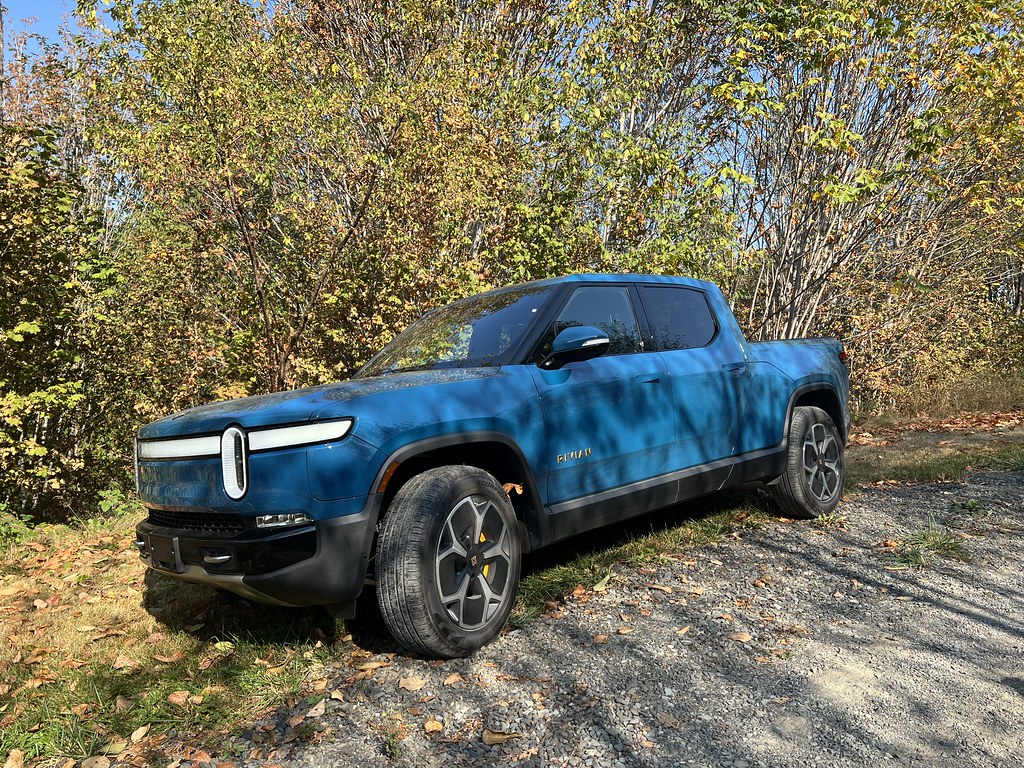
11. **Rivian R1T**The Rivian R1T heralds a significant paradigm shift in overlanding capabilities, ingeniously leveraging electric propulsion to unlock advantages that are simply impossible to achieve with conventional powertrains. This purpose-built electric adventure vehicle seamlessly combines cutting-edge technology with thoughtful design features that have been specifically engineered to elevate outdoor exploration. At its heart, the R1T boasts four independent electric motors, collectively generating an astounding 835 horsepower and an instantaneous 908 lb-ft of torque. This immense power translates into unprecedented off-road performance, allowing for incredibly precise control in technical terrain through individual wheel torque vectoring—a level of granular control that far surpasses the capabilities of traditional mechanical differentials.
The R1T’s innovative electric architecture creates unique and highly practical storage opportunities that truly set it apart. This includes its signature “gear tunnel,” a 65-inch-wide pass-through compartment located ingeniously behind the cab, providing 11.6 cubic feet of weatherproof storage. This versatile space is perfect for accommodating equipment like camp chairs, fishing rods, or even the optional Camp Kitchen, which features an induction cooktop and a sink. Complementing this, an 11-cubic-foot front trunk (frunk) and flexible bed space further expand its cargo capacity, while an integrated tonneau cover secures gear in the bed, and numerous tie-down points facilitate various mounting systems—storage solutions that are genuinely unmatched by conventional trucks.
The vehicle’s adaptive air suspension system provides an adjustable ride height, offering an impressive range from 7.9 to a commanding 14.4 inches of ground clearance. This latter setting affords exceptional approach, breakover, and departure angles of 34, 29.3, and 33.7 degrees, respectively. This formidable capability, combined with extensive underbody protection, allows the R1T to confidently traverse challenging off-road terrain. Furthermore, its impressive 3-foot wading depth exceeds that of many conventional off-roaders, and its flat underbody further enhances clearance over obstacles, minimizing snag points.
What truly distinguishes the R1T for overlanding is how its electric architecture fundamentally enhances the entire camping experience. The vehicle can provide up to 7.6 kW of 110V power through multiple integrated outlets, effectively eliminating the need for separate, bulky generators to run camp equipment and appliances. While range anxiety remains a pertinent consideration (the large battery pack typically offers approximately 314 miles of range), Rivian’s rapidly growing Adventure Network provides high-speed charging options strategically located along popular adventure corridors. The electric powertrain also offers unique advantages in off-road situations, including precise, quiet control, reduced maintenance requirements, and silent operation, which significantly enhances wildlife viewing opportunities. For those ready to wholeheartedly embrace the future of adventure travel, the Rivian R1T delivers a compelling and visionary take on electric overlanding.
Car Model Information: 2025 Rivian R1T Adventure Dual-Motor Standard
Name: Rivian R1T
Manufacturer: Rivian
Production: 2021–present
ModelYears: 2022–present
Assembly: Rivian Automotive,LLC
Designer: Jeff Hammoud
Class: Mid-size car,luxury car,pickup truck
BodyStyle: crew cab
Layout: unbulleted list
Related: Rivian R1S
Motor: Alternating current,Permanent magnet motor
Transmission: Single-speed
Battery: kWh,lithium-ion battery
ElectricRange: unbulleted list
Abbr: on
Charging: unbulleted list
Wheelbase: 135.9 in
Length: 217.1 in
Width: 81.8 in
Height: 75.7 in
Weight: cvt
Sp: us
Powerout: unbulleted list
Chassis: Body-on-frame
Categories: All Wikipedia articles written in American English, All articles with vague or ambiguous time, Articles with short description, Commons category link is on Wikidata, Electric trucks
Summary: The Rivian R1T is a battery electric mid-size light duty luxury pickup truck produced by the American company Rivian. The first production R1T was manufactured in Illinois on September 28, 2021, and was delivered to a customer. The official EPA range for the Rivian R1T (MY 2022–2024) ranges from 255–420 miles (410–676 km), depending on drivetrain, battery pack capacity and wheel size.
Get more information about: Rivian R1T
Buying a high-performing used car >>>
Brand: Rivian Model: R1T
Price: $68,998 Mileage: 2,127 mi.
Read more about: The 10 EVs That Go the Distance: Maintaining Nearly 80% Battery Life Over Time
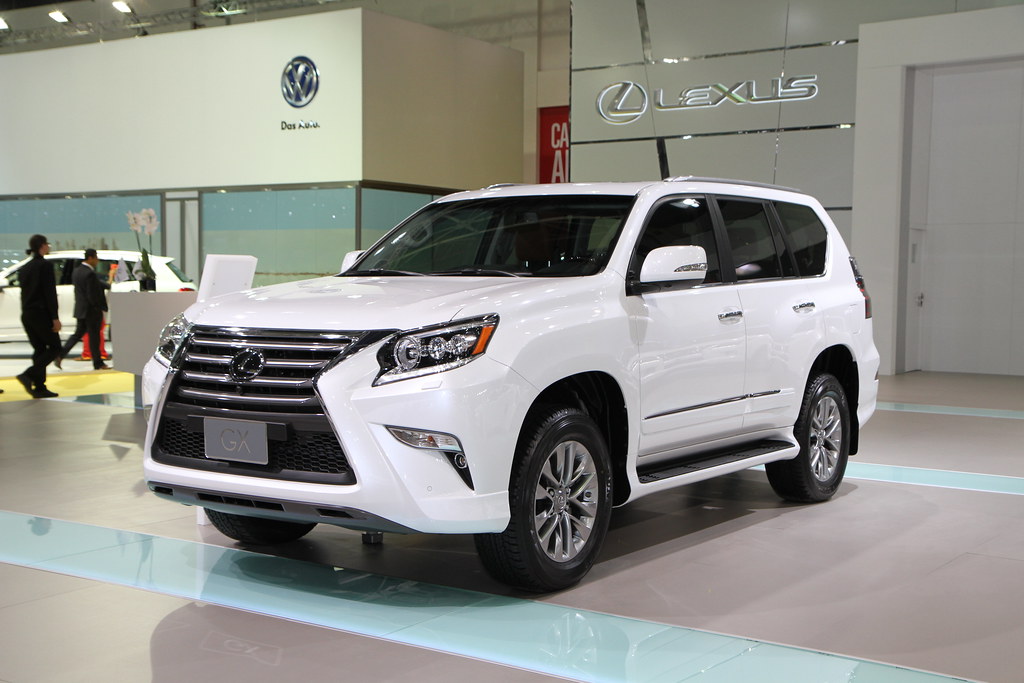
12. **Lexus GX**The Lexus GX occupies a truly unique and compelling position within the overlanding community, standing as a luxury SUV meticulously built upon a profoundly proven off-road platform. This strategic combination offers a compelling compromise that beautifully balances premium comfort with unwavering capability. Known globally as the Toyota Land Cruiser Prado, the GX masterfully merges Toyota’s legendary reputation for reliability with Lexus’s distinctive refinement. The result is a vehicle that is not only capable of tackling challenging trails with confidence during the day but also ensures its occupants arrive at remote destinations feeling refreshed and without undue exhaustion.
At the very foundation of the GX’s robust off-road prowess lies its traditional body-on-frame construction and a full-time four-wheel-drive system, which features a highly effective Torsen limited-slip center differential. These core elements provide the unyielding durability and traction essential for serious backcountry exploration. The GX’s capability is further enhanced by a sophisticated suite of integrated technologies, including the Kinetic Dynamic Suspension System (KDSS) that intelligently and automatically optimizes the suspension for either refined on-road comfort or maximum off-road articulation, adapting seamlessly to varying conditions. Additionally, the available Crawl Control functions as an advanced off-road cruise control, expertly managing throttle and braking inputs while the driver focuses entirely on steering through challenging obstacles. The Multi-Terrain Select system further adjusts vehicle parameters for a variety of surfaces, ranging from slippery mud to jagged rocks. With a solid 8.1 inches of ground clearance (and an even more impressive 9.1 inches with the optional air suspension), the GX navigates obstacles with confidence, while robust skid plates provide crucial protection for vital underbody components.
Power for the Lexus GX comes from a naturally aspirated 4.6-liter V8 engine, which produces 301 horsepower and 329 lb-ft of torque. While these figures might be considered modest by contemporary standards, this powertrain is renowned for delivering the smooth, reliable power that is characteristic of Toyota’s legendary overbuilt engines, prioritizing durability above sheer speed. This powertrain, however, does come with a trade-off in efficiency, with fuel economy ratings of just 15 mpg city and 19 mpg highway. Despite this, the GX’s impressive 5,130-pound towing capacity significantly expands its utility, allowing it to easily haul additional gear or a small trailer for extended adventures.
Inside, the GX offers premium appointments that include sumptuous leather upholstery, elegant wood trim, and advanced climate control systems, all meticulously designed to enhance comfort during long journeys into the wild. With the third row of seating thoughtfully folded, the vehicle provides a generous 46.7 cubic feet of cargo space, which is sufficient for most camping gear and supplies. The convenient split rear tailgate, featuring a flip-up window, allows for easy and quick access to the cargo area. The Lexus GX has cultivated a dedicated and passionate following within the overlanding community, with reputable companies like Icon, Metal Tech, and ARB offering comprehensive upgrade packages that include suspension lifts, protective armor, and sophisticated storage systems. For those discerning adventurers seeking serious off-road capability without having to sacrifice a luxurious driving experience, the Lexus GX delivers an exceptionally compelling package, firmly backed by Toyota’s sterling reputation for crafting vehicles that truly thrive in the most remote and demanding environments.
Car Model Information: 2018 Lexus GX 460 Premium
Name: Lexus GX
Caption: 2024 Lexus GX 550 (J250)
Manufacturer: Toyota
Aka: Toyota Land Cruiser Prado
Production: 2002–present
ModelYears: 2003–present
Assembly: Tahara, Aichi
Class: Full-size car,Luxury car,SUV
BodyStyle: SUV
Layout: Front-engine, four-wheel-drive
Chassis: Body-on-frame
Categories: 2010s cars, 2020s cars, All-wheel-drive vehicles, All articles containing potentially dated statements, All articles with dead external links
Summary: The Lexus GX is a mid/full-size luxury SUV sold in North American and Eurasian markets by Lexus, a luxury division of Toyota. The GX is based on the Toyota Land Cruiser Prado, from which it derives its off-road capability. Lexus introduced the first generation, known as the GX 470 in 2002, and subsequently became the third SUV to enter the Lexus lineup. A full-time four-wheel drive system is standard with low-range gearing. The 4.7-liter V8 engine in the GX 470 was the same as used on the larger LX 470. The firm next introduced the second-generation model in 2009, badged GX 460 to reflect the switch to a 4.6-liter V8 engine. Lexus later released a lower displacement GX 400 in 2012 for the Chinese market, with a 4.0-liter V6 engine. The third-generation model introduced in 2023 uses the GX 550 moniker with a twin-turbocharged 3.4-liter V6 engine and GX 550h with a turbocharged hybrid electric 2.4-liter four-cylinder engine. As of 2024, the GX is positioned between the larger LX or TX and the smaller RX. Though it is thought the GX has always been larger than the RX, from 2015 to 2022, the RX is slightly longer and slightly wider than the GX and therefore the GX was considered smaller. All GX production has occurred at the Tahara plant in Japan, alongside the Land Cruiser Prado and the export-minded Toyota 4Runner. Some countries classify the GX as a full-size vehicle (e.g., Australia), while some classify it as a mid-size vehicle (e.g., US), depending on local regulations. The name “GX” stands for “Grand Crossover”. Unlike crossover SUVs, the GX has body-on-frame construction and “Crossover” stands for it being in the middle of the range.
Get more information about: Lexus GX
Buying a high-performing used car >>>
Brand: Lexus Model: GX
Price: $30,969 Mileage: 89,502 mi.
Read more about: Built to Last: 12 Reliable Sedans That Will Cruise Past 200,000 Miles
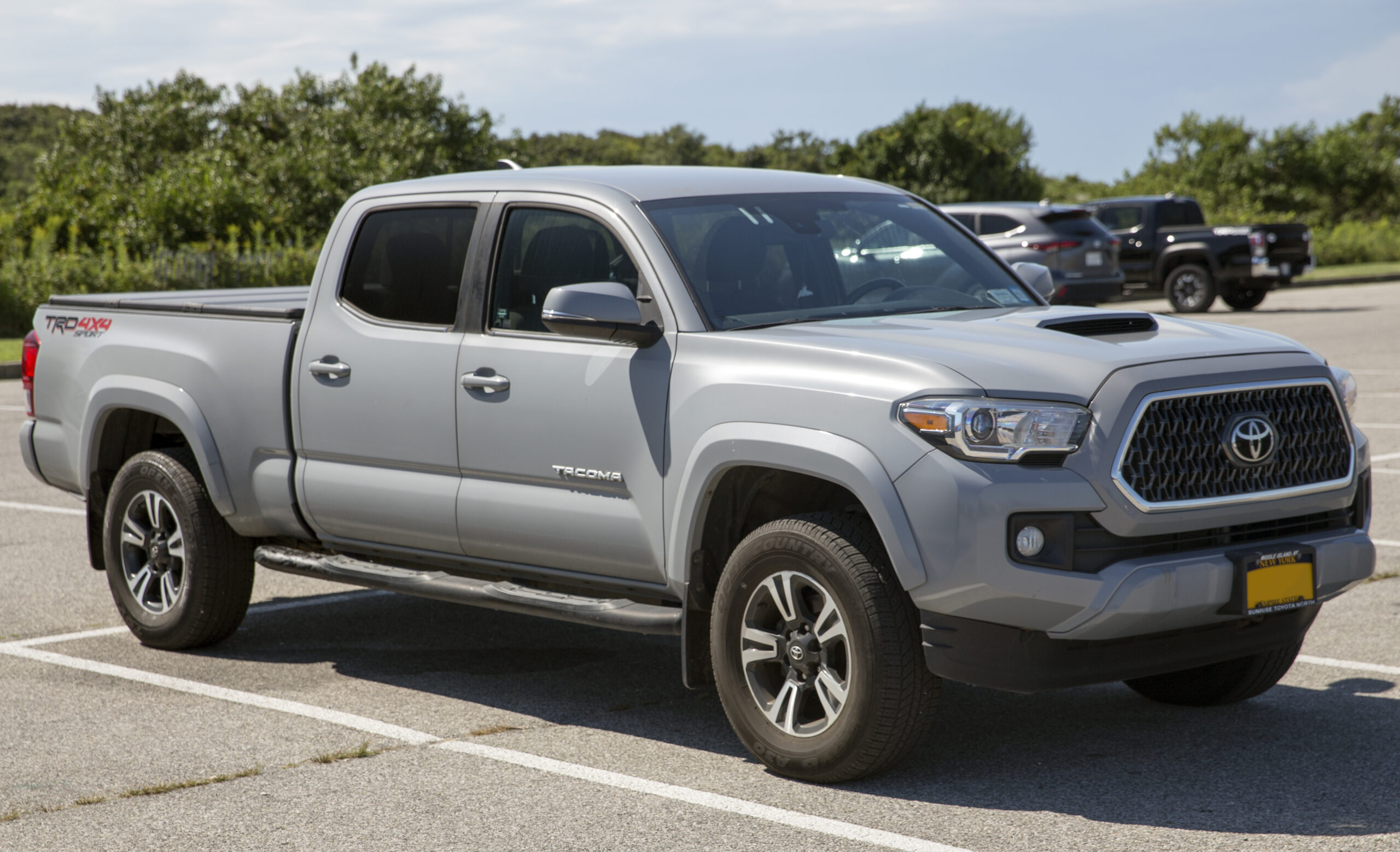
13. **Toyota Tacoma**The Toyota Tacoma has long been revered as a benchmark in the pickup truck segment, and for good reason—you simply cannot go wrong with any year model of this exceptional vehicle. It has solidified its reputation as an outstanding overlanding choice, lauded for its unwavering reliability, remarkable capability, enduring durability, and its impressive ability to maintain a strong resale value over time. As a true fan-favorite in the adventure community, the Tacoma benefits from a plethora of aftermarket parts built specifically to enhance its performance and utility, ensuring owners can customize their rigs to perfectly match their unique expedition needs. Furthermore, it boasts a great fuel economy rating, typically ranging between 18-22 mpg, a practical advantage for extended trips.
Indeed, the Tacoma’s credentials are so strong that many seasoned overlanders, including the author of this guide, have chosen it as the foundation for their personal overland builds. Its balance of power, efficiency, and robustness makes it a versatile platform for transforming into a true expedition vehicle. This firsthand endorsement speaks volumes about the confidence and satisfaction owners derive from this dependable truck.
However, it’s worth noting that as a pickup truck, the Tacoma does come with certain inherent characteristics that might be considered minor drawbacks in specific scenarios. It typically offers slightly less clearance in the rear when engaging in extreme rock crawling compared to some dedicated SUVs. Additionally, while the truck bed provides ample space, effectively weather-proofing bed storage can be more challenging than in a fully enclosed SUV, where cargo is inherently protected from the elements. Despite these points, the Toyota Tacoma still offers genuinely great off-road capability and, for many, stands as the best overland vehicle they could have ever asked for. There’s a distinct reason why it remains one of the most popular rental cars for adventurers and a common sight on trails worldwide.
Ultimately, if you can accommodate the considerations regarding rear clearance and specific bed storage solutions, the Tacoma is poised to make an absolutely excellent overland build. Its legendary reliability, combined with robust capability and extensive aftermarket support, makes it a perennial favorite for both novice and experienced adventurers looking to explore beyond the beaten path. It’s a vehicle that embodies the spirit of adventure, ready to be transformed into your perfect partner for discovering the wild.
Car Model Information: 2011 Toyota Tacoma Access Cab
Name: Toyota Tacoma
Caption: 2020 Toyota Tacoma TRD Off-Road
Manufacturer: Toyota
Production: January 1995 – present
ModelYears: 1995–present
Class: unbulleted list
Layout: Front-engine, rear-wheel-drive layout
Predecessor: Toyota Hilux (N80)
Categories: 2000s cars, 2010s cars, 2020s cars, All-wheel-drive vehicles, All Wikipedia articles written in American English
Summary: The Toyota Tacoma is a pickup truck manufactured by Japanese automobile manufacturer Toyota since 1995. The first-generation Tacoma (model years 1995 through 2004) was classified as a compact pickup; subsequent models are classified as mid-sized pickups. The Tacoma was Motor Trend’s Truck of the Year for 2005.
As of 2015, the Tacoma was sold in the United States, Canada, Mexico, Costa Rica, Bolivia, Bermuda, and the French overseas collectivity of New Caledonia. Most markets across the world receive the Toyota Hilux in lieu of the Tacoma.
The name “Tacoma” was derived from the Coast Salish peoples’ name for Mount Rainier in the U.S. state of Washington.
Get more information about: Toyota Tacoma
Buying a high-performing used car >>>
Brand: Toyota Model: Tacoma
Price: Not Priced Mileage: 161,596 mi.
Read more about: The 14 Essential Questions to Ask Before Buying a Car: Your Comprehensive Guide to Safety and Value
Choosing the ultimate vehicle for your camping and overlanding adventures is a deeply personal journey, shaped by your unique travel style, desired destinations, and practical considerations. The diverse array of vehicles highlighted in this guide, from rugged 4x4s with generations of heritage to innovative electric trucks and luxurious off-roaders, each bring a distinct set of strengths to the table. As you embark on this exciting decision-making process, remember to first define the type of travel you’ll primarily be doing; simple dirt trails demand a different rig than the toughest routes in Baja and Moab. Your budget, whether for a brand-new model upwards of $50,000 or a reliable used vehicle for a few thousand, will also play a crucial role. Above all, prioritize capability, cargo capacity, unquestionable durability, and—most importantly—rock-solid reliability. It’s no coincidence that Toyotas frequently appear on these lists; their reputation for simplicity, extreme reliability, and global parts availability often makes them the definitive choice for those planning truly remote expeditions where failure is simply not an option. Whichever path you choose, the right vehicle will not just take you there, it will transform your journey into an unforgettable odyssey into the heart of the wild.


